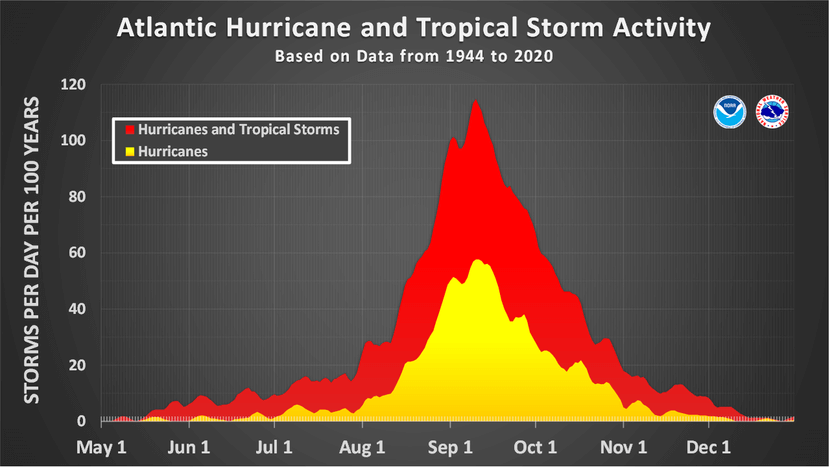As the vibrant fall colors fade and leaves begin to fall across much of the U.S., the tropics remain active. Tropical Storm Sara formed in the western Caribbean on Thursday, November 14, and is expected to bring significant rainfall and flooding to Central America before moving into the Gulf of Mexico, potentially tracking toward Florida. Remarkably, this storm developed just 10 days after Major Hurricane Rafael, which became the second strongest hurricane to develop in the month of November on record in the Gulf of Mexico (category 3).

Although the Atlantic hurricane season officially runs from June 1 to November 30, with September typically being the peak, hurricanes in November are uncommon. Historical records, kept since the 1850s, show that only 7% of all named storms have formed in November. In fact, there have been only five hurricanes to make U.S. landfall in November, three of which struck Florida:
- An unnamed hurricane in 1935
- Hurricane Kate in 1985
- Hurricane Nicole in 2022
Why does hurricane season slow down so quickly?
Several factors contribute to the rapid decline in hurricane activity as the season progresses:
- Cooling Ocean Waters: As fall settles in, the amount of sunlight decreases, and the ocean waters gradually cool. Since hurricanes rely on warm water (typically above 80°F) for energy, the cooling waters during this time significantly reduce the potential for storm formation and intensification.
- Cold Fronts and Atmospheric Changes: Fall is also a time when cold fronts become more frequent. These fronts can push far enough southeast to disrupt tropical development. If a cold front is strong enough, it can steer any developing storms away from the U.S., often directing them eastward into the Atlantic. This explains why the U.S. sees fewer landfalls in the latter months of the hurricane season, while the Caribbean may still experience some storms (such as Rafael making landfall in Cuba).
If Tropical Storm Sara does intensify as it enters the Gulf of Mexico and heads toward Florida, it would mark only the sixth U.S. landfall in November and the fourth Florida landfalling hurricane for the month.
To track Sara’s evolution and any impacts that are expected for the U.S., subscribe to our Clarity platform: claritywx.com/sign-up.



